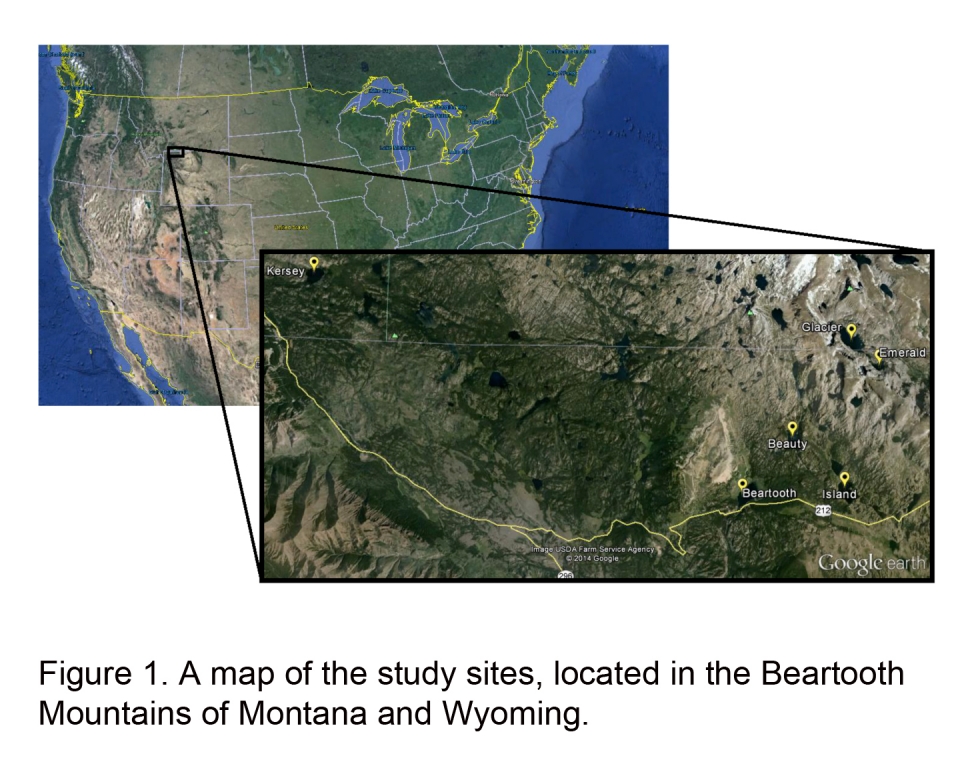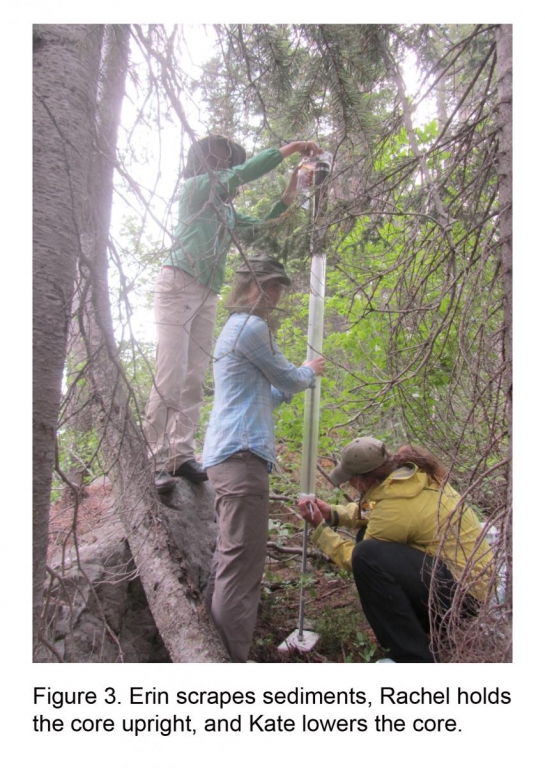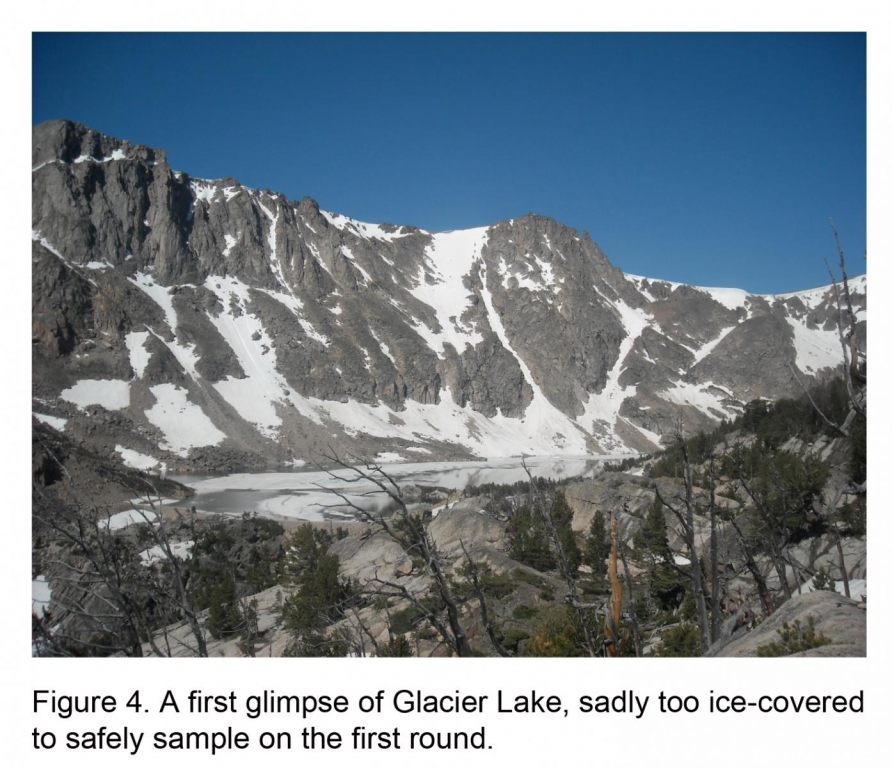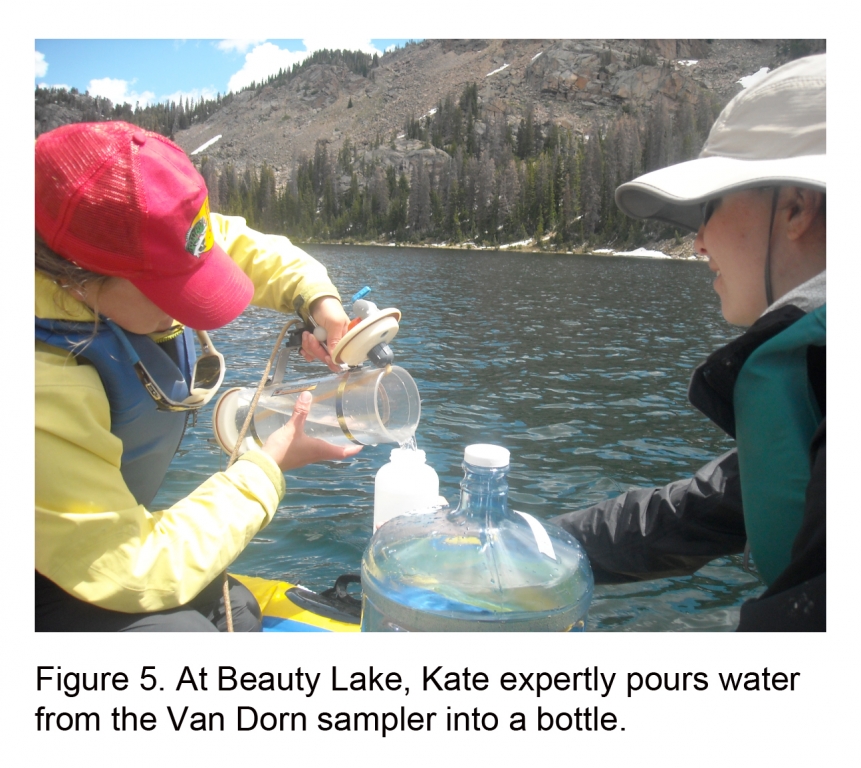Effects of Changing Snowpack on Alpine Lakes in the Rocky Mountains
Effects of Changing Snowpack on Alpine Lakes in the Rocky Mountains
Field Team Members: Erin Hayes-Pontius, Kate Warner, and Rachel Dicker
Dates: July 5 – July 23, 2014
Funding Support: Dan and Betty Churchill Fund
Location: Beartooth Mountains
Background
Alpine lake ecosystems have a short ice-off season, which means that even small changes in climate can have dramatic effects. A recently published tree ring record shows that in the Rocky Mountains, snowpack has fluctuated dramatically for decades at a time over the past 800 years (Pederson et al. 2011). In contrast to past variability, the general warming of the 20th century has brought about a precipitous decline in the amount of snowpack in the Rocky Mountains.
The implications of these snowpack changes for alpine lake ecology remain unclear. Snowpack size strongly affects the hydrological budget of alpine lakes as well as the timing of ice-off. There is evidence that increased snowpack extends lake mixing period (Noble 2013), and that therefore decreased snowpack extends the stratified period. From a chemical standpoint, snowpack may provide an important source of nutrients to lakes. For example, a lake in the North Cascades was found to receive 75% of its NO3– and 30% of its SO42 from snowpack (Johnson et al. 2013). Thus, declines in snowpack may strongly affect nutrient inputs; these changes will then in turn affect the base of the food web, the algae, and further effects may continue up the food web through invertebrates and fish. How the base of the food web responds to snowpack changes is unknown. We have reason to suspect that of the diatoms, Aulacoseira may respond strongly to variations in snowpack, and serve as a sentinel species of snowpack-driven lake changes. Because Aulacoseira spp. are heavier than other diatoms, they depend on the mixing period following ice-off to have access to resources such as light and nutrients (Reynolds 1984, Gibson et al. 2003). However, more information regarding Aulacoseira resource ecology is needed to aid in interpretation of natural studies.
Thanks to the Churchill Exploration Fund, we set out the day after Independence Day to drive across the country to the Beartooth Mountains, located just east of Yellowstone National Park (Fig. 1).
Research Activities
When we arrived at the Beartooth Lake Campground, we immediately set up camp and began organizing gear for our first days in the field. First, we visited Kersey Lake to sample and set up some resource ecology experiments. When we returned to the truck, it appeared as though we had found some fans (Fig. 2)!
The next day, we returned to Kersey to retrieve a long core using a piston corer. Thankfully, Andrea Nurse met us out in the field to help us. It took five tries, but we finally got a 79cm core! That was just the beginning, though- then we brought it back to shore and spent hours extruding it and painstakingly sectioning it every 5mm. During this process, numerous anglers walked by and asked us about what we were doing. Most of them had no familiarity with sediment cores, so it was exciting to explain the science and see the surprise on their faces. A lot of people who fished Kersey that day now know about sediment cores and some of the information they can tell us. This core will be used to show how this lake responds to changes in snowpack.
In the three days that followed, we sampled Beartooth and Island lakes, sampled and set up experiments in Beauty, and then finally went up to Glacier and Emerald. We had wanted to sample both Glacier and Emerald, but Glacier Lake had other plans- it was too frozen to get in.
Ice on the lake wsn’t the only surprise that day: two fishermen walked up to us, clearly determined to chat. The older of the two asked, “Are you the ones from Maine?” We replied that we were, and he shot back with, “Well I’m a climate change denier.” We were taken aback, and later realized that he started the conversation this way because he saw the CCI logo on the truck in the parking lot. We ended up talking for a little while, and it soon became apparent that he had done more reading on the matter than the average person, but firmly believed that climate change wasn’t that big of a deal. I’m not sure that we managed to convince him of anything since he seemed pretty set in his beliefs, but it was still a good, lively conversation to have. After sampling Emerald, we had reached a milestone: Round 1 of sampling was complete- just two more to go.
At the end of each day, we returned to camp to process the water samples we had collected. Because summertime in the mountains usually means sunny mornings and stormy afternoons, we used an extra tent- named The Tent of Science- to filter the water samples and fix the algae samples with preservative.
During Round 2 of sampling, we also collected surface sediments from each lake to check out diatom community composition from the recent past. There’s nothing quite like pulling up a corer full of sediments! Round 3 saw more sampling and the end of the experiments. In two weeks, we managed to run experiments in two lakes, take a long core from one lake, sample five lakes three times, and sample a sixth once. After all that, we made the long drive back across the country and returned the samples safely to Maine.
Acknowledgements
An award from the Churchill Exploration Fund covered travel, lodging, and food expenses. None of this would have been possible without the generosity of Dan and Betty Churchill- thank you for funding this expedition!
References
Gibson CE, Anderson NJ, Haworth EY. 2003. Aulacoseira subarctica: taxonomy, physiology, ecology, and paleoecology. European Journal of Phycology 38(2): 83-101.
Johnson BE, Howard KL, Noble PJ. 2013. 600 years of climatic and anthropogenic influences recorded in Fallen Leaf Lake, Sierra Nevada, CA: Geological Society of America, 125thAnniversary Annual Meeting & Expo, Denver, Colorado, Abstracts 45(7): 423.
Noble PJ, Chandra S, Kreamer DK. 2013. Dynamics of phytoplankton distribution in relation to stratification and winter precipitation, Fallen Leaf Lake, California. Western North American Naturalist 73(3): 302-322.
Pederson GT, Gray ST, Woodhouse CA, Betancourt JL, Fagre DB, Littell JS, Watson E, Luckman BH, Graumlich LJ. 2011. The unusual nature of recent snowpack declines in the North American Cordillera. Science 333: 332-335.
Reynolds C. 1984. Ecology of Phytoplankton. Usher M, Saunders D, Peet R, Dobson A, editors. Cambridge, UK: Cambridge University Press; 535p.







